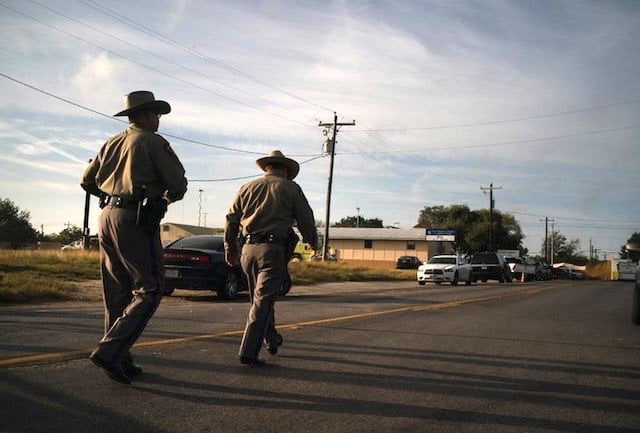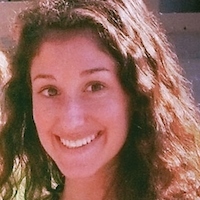
I awoke at 3:30 this morning in tears, heartbroken, distraught, and so damn fed up with hearing about another act of white terror—of violence in our communities.
I texted one of my mentors, Urban Yoga Foundation Founder/Director Ghylian Bell, and said, “I can’t sleep, gun violence on my mind.” She texted back, “I have a theory.”
She called and shared these words: “My theory is that there is a person who is not at the table about how we are moving forward as a society. The average white man is not at the table. The average white man is feeling invisible. He is feeling starved for attention and starved for connection. “
This was coming from a black woman in Harlem, New York.
“But,” I exclaimed (the white woman from Silicon Valley), “The whole world has been built by and for him, what do you mean he’s not at the table?—He’s at the head of the table.”
And then I paused, took a deep inhale, and then sighed aloud.
Devin Patrick Kelley, a former Air Force member, white male from rural Texas, hasn’t been at the table. If he was at the table, he would’ve known that he didn’t need his AR-15 to gain attention or become more visible; he wouldn’t have needed to have it on display on his Facebook page. Devon Patrick Kelley wasn’t at the table, and neither was Stephen Paddock a month ago, or the countless other white male violent offenders.
These are the white men who are feeling disconnected, excluded, isolated, and powerless. They are feeling like they are losing their identity. And they are. Because what do they have to identify with? They are a part of a culture that has historically enslaved, raped, murdered, and displaced people. What is their cultural identity? Who is the white American male offender (WAMO)?
The WAMO is in an identity crisis.
He is the bully in the classroom who acts out to externalize his pain, to cry out for attention. Even if it’s negative attention, it’s still attention.
Because the WAMO is starved for attention, he’ll take any attention he can get. He goes through life lonely, isolated, not knowing who he is, not feeling like he is a part of something or that he belongs. As an adult, he turns to alcohol, sex, his work, or violence, because he doesn’t know how to cope with his pain. In the case of Kelley, he was a former Air Force member who had been sentenced to military prison for assaulting his wife and child in 2012. He was a hurt person who hurt people instead of seeking healing for himself.
Society hasn’t given him any tools to move through his pain, to feel, and to heal. The WAMO doesn’t know how to heal. He is ravenous now, and he needs attention. He needs you to know he exists and still has a place here.
Society keeps going without him. Women have started being heard, people of color have started being heard, LGBTQ folks have started being heard—and our voices are drowning out those of the WAMO. He is feeling silenced, distressed, and lost. He needs to make a statement.
So he picks up an assault weapon and opens fire on a church—then takes his own life, after taking the lives of others.
He needed us to see his pain and to know it. But he didn’t learn to use his words, so he used his actions instead.
Society responds with the usual rhetoric about his mental illness and the need for gun control. We respond by blaming guns, some blaming white supremacy.
But the truth is, we are all responsible.
We are all responsible for our community violence, and we are all responsible for healing it, together.
We cannot leave anyone out of the conversation. Everyone needs to be at the table. Yes, even the ones who have had more seats than the rest of us, throughout time. They still need a seat; they still need to be heard.
As a society, we need the tools to be with our pain, to feel it, to move through it, to grieve, and then to move forward in a different way. Because this is not the way.
This way cannot be normalized. There is another way.
By no means did we come to a resolution at 4 a.m., but we do know there is another way. We do have some tools for being with our pain and moving through our grief. These tools have come to us through thousands year old traditions of yoga, meditation, contemplation, rhythm, and music.
Let’s practice these tools. Let’s hold each other in our pain. Let’s heal together.
Here are three tools for moving through grief:
Breath of Joy/Breath of Sorrow.
Generally called breath of joy (mostly because people don’t want to breathe in sorrow, but we have to feel our sorrow in order to feel our joy)—and this connects our movement and our breath.
Rhythm.
Listen to lyrics or read poetry that is rhythmic, as rhythm is healing.
The first sound we were introduced to in our mother’s womb was the rhythm of her heartbeat.
Here’s a song we like, by Trevor Hall, particularly the chorus:
“Confusion clouds the heart but it also points the way
Quiet down the mind
The more the song will play
So, you can’t rush your healing
Darkness has its teachings
Love is never leaving
You can’t rush your healing
Your healing.”
Meditation.
Sit down and meditate, to slow down your thoughts and feel. Meditation allows you to be with yourself. It doesn’t mean you have to sit in silence; you can use a guided meditation or music in the background. Find a comfortable seat, feel your tall spine, upright and dignified, feel your breath travelling in through your nose, down along the back of your throat, filling up your lungs and belly with oxygen, then breathe all the air out.
Stay with your breath.
Breathe.
Create space in your body, between your thoughts.
Create space to feel and to grieve.
This is painful. Our hearts are broken, and there is no easy fix for heartbreak.
But we have to “feel it to heal it”—and if America needs anything right now, it needs more healing, more contemplation, more pauses, and less reacting. Less acting out, and more turning in. We need to be together in our pain, grieve together, and heal together.
We are all responsible for this violence, and we are all responsible for our healing.
We all need to be at the table.
~
Author: Pam Lozoff
Image: New York Times
Editor: Jen Schwartz
Copy Editor: Travis May






Read 0 comments and reply